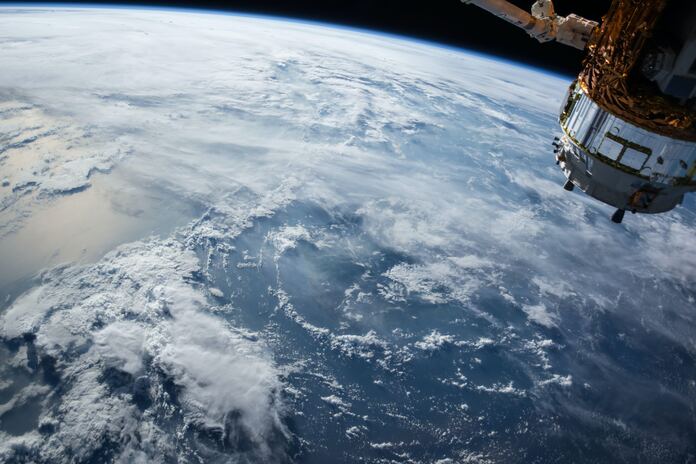Satellogic (NASDAQ:SATL) currently has 38 satellites in space and expects to launch an additional ten by the end of 2023. Back in 2021, the corporation anticipated having 111 satellites by the end of this year. Furthermore, it appears that demand is falling short of Satellogic’s estimates, as revenue for 2022 was only $6.01 million. In my opinion, the company may run out of cash in the next months, resulting in massive shareholder dilution, and my stock rating is a strong sell.
Business and Financial Overview
In case you’re unfamiliar with Satellogic, here’s a quick rundown of the company. The company was founded in 2010 with the goal of dominating the satellite imagery sector by deploying small satellites costing less than a million dollars apiece and a patented camera design to gather approximately ten times more data than any other small Earth Observation satellite. Its purpose is to develop the world’s first scalable, fully automated Earth Observation platform and remap the whole planet’s surface in sub-meter resolution on a regular basis. To accomplish this, the business would require a full network of approximately 200 satellites. The total addressable market (TAM) is valued at more than $140 billion, according to Satellogic.
According to the company’s most recent business presentation, their acquisition cost per square kilometer is about $0.46, which is far lower than that of its competitors. Furthermore, its image resolution appears to be superior to that of several of its competitors.
However, I am concerned that the purchase cost per square kilometer in the corporate presentation remains the same as it was two years ago. Not only for Satellogic, but also for its competitors. Furthermore, despite having the world’s largest commercial fleet of sub-meter resolution satellites, progress on launches has been slow, and Satellogic is nowhere close to achieving 200 satellites in orbit. It only had 26 at the end of 2022, with intentions to launch another 22 in 2023. According to the most recent corporate presentation, the corporation now has 38 satellites in orbit.
When Satellogic was offered on NASDAQ in 2021 via a SPAC called CF Acquisition Corp, the prediction was for 37 satellites in orbit by 2022 and 111 by 2023. Another troubling fact is that Satellogic’s satellites have a design life of 3-4 years, with 13 of them projected to be deactivated in 2023 alone. Given this, the number of satellites in orbit might fall to 35 by the end of the year (assuming 10 spacecraft are launched and 13 are retired). According to financial projections, Satellogic was expected to grow fast in 2021, with revenues of $787 million and EBITDA of $473 million by 2025.
Well, it appears that demand for Satellogic’s services is much lower than projected, with sales of only $4.25 million in 2022 and $6.01 million in 2023. Furthermore, a single customer contributed $3.4 million to 2022 revenue (see page 48 here). The company’s revenues are now derived primarily from the sale of imagery through its asset monitoring and constellation-as-a-service ((CaaS)) lines of business.
While revenues are predicted to reach between $30 million and $50 million in 2023, this is still significantly behind estimates from two years ago, and EBITDA breakeven is expected in 2024. Given that R&D and general and administrative spending alone exceeded $50 million in 2022, I predict Satellogic to be deeply in the red this year.
Turning to the balance sheet, I’m concerned that the company may run out of cash soon, resulting in massive shareholder dilution. Cash and cash equivalents amounted at $76.5 million as of December 2022, having decreased by approximately $47.5 million in the second half of the year alone. The net cash flows used in operating activities were $68.5 million in 2022, and I expect them to rise dramatically in 2023 as a result of the launch of over 20 satellites and the decommissioning of several more.
So, how do you approach this? Short-selling appears to be risky, thus I believe the best course of action is to avoid this stock. As of the time of writing, the short borrow fee rate was 83.9%, according to Fintel data. Furthermore, it takes more than 2.5 days to cover, and the lowest accessible strike price for call options is $2.50.
Looking at the risks for the bear case, I believe the most significant is that the share prices of microcaps can surge in the absence of news or catalysts, resulting in huge losses for short sellers. Satellogic’s share price climbed dramatically during February-April 2022, July-August 2022, and December-January 2023, as an example. This is a stock that is infrequently traded, with a daily trading volume of less than 30,000 shares.
Bottom Line
Satellogic is one of the world’s top providers of high-resolution satellite imagery solutions, but its satellite launches have been delayed, limiting the possibilities of its network, and revenues have fallen far short of projections. Given that several of the company’s satellites are nearing the end of their design lives, I’m concerned that the number of satellites in orbit may be reduced by the end of 2023. Furthermore, even if revenue for the year reached $50 million, Satellogic would be in the deficit, and I expect funds to run out in the coming months. However, short-selling is risky given the high short-borrow fee rate and the stock’s history of considerable share price volatility. Risk-averse investors, in my opinion, should avoid this stock.
Featured Image: Unsplash © NASA









